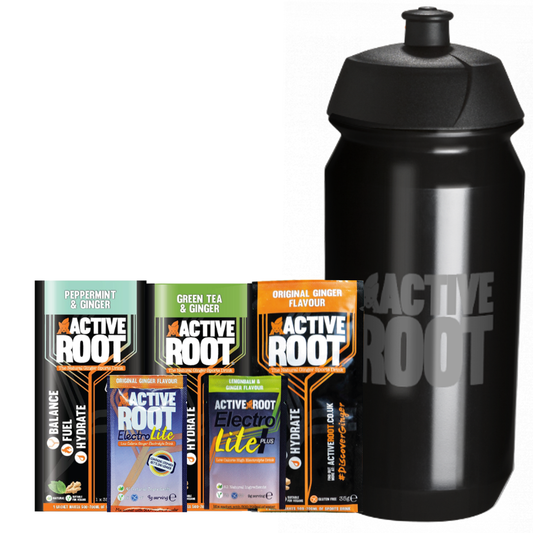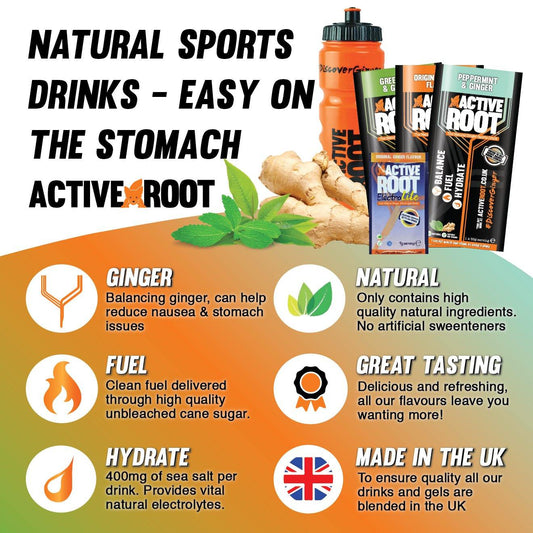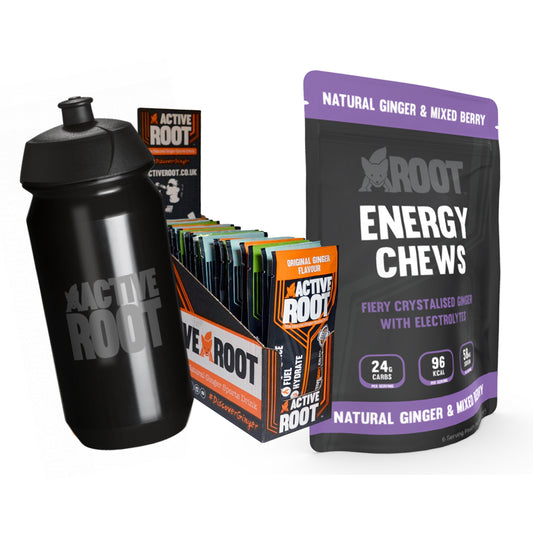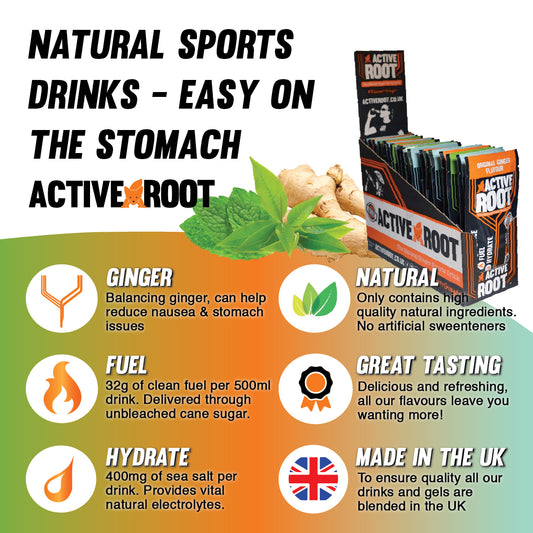Trail Running Nutrition Guide
Trail Running is considered a mixture of running and hiking on any unpaved, natural surface, and can be done just about anywhere making it increasingly popular amongst new runners.
Terrain can vary massively from trail to trail making it hard to compare any two races. For this reason, trail running is less focused on speed and finish time than road running; for many people it’s more about the challenge and a chance to be out in nature.
Trail running can be more demanding on certain joints and muscles and requires specific nutrition just like any other discipline. Also, just like the others this can be easily broken down into three main categories - pre, during, and post.
Pre-Run
One of the most important things to remember for a successful nutrition strategy is don’t leave it too late!
It’s best to eat 2 to 3 hours ahead of a run, this will give your body plenty of time to digest your meal. Ideally, any meal eaten pre-run should be high in carbohydrates and protein and avoid too many fats or fibre which can leave you feeling full and uncomfortable.
Make sure you are hydrated and fully fuelled ready to run by trying a pre-loading strategy. Ideally, drink between breakfast and the run, sipping slowly and finish 45 minutes before the run starts. We’d recommend our Sports Drink and Electrolite drinks for this purpose.
The maximum benefit is obtained from drinking early, as the slower you sip-feed your fuel into your system the more time the body has to absorb it and maximise performance.
Made with high gingerol compound ginger, slow-burning cane sugar, and replenishing sea salt, our Sports Drink provides sustained energy and optimal hydration. Packed with over 200mg of natural dried ginger, it also helps alleviate gastrointestinal stress and reduces nausea.
Depending on your preferred strength, each sachet makes 500-700ml of sports drink. Simply pour your sachet into 500-700ml of water and shake, adjusting the amount of water to taste.
Another option is to take some gel mix at the start; this has the added benefit of giving you a boost 15-25 minutes into your run.
Whichever option you choose, the two most important things are your hydration levels and glycogen stores.
-
 Sale
SaleMarathon Pack
Regular price £35.00 GBPRegular priceUnit price / per£40.08 GBPSale price £35.00 GBPSale -
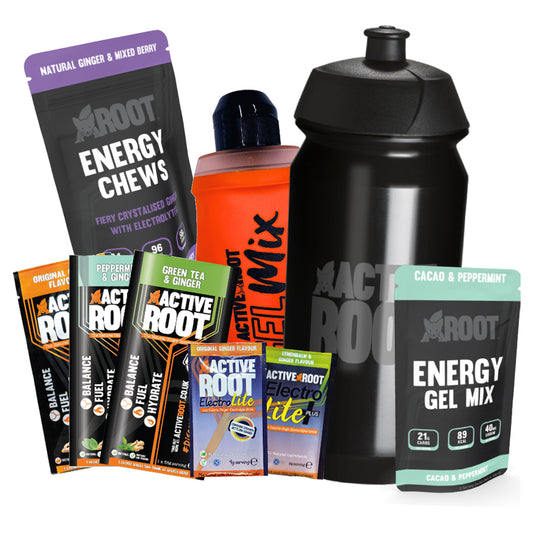
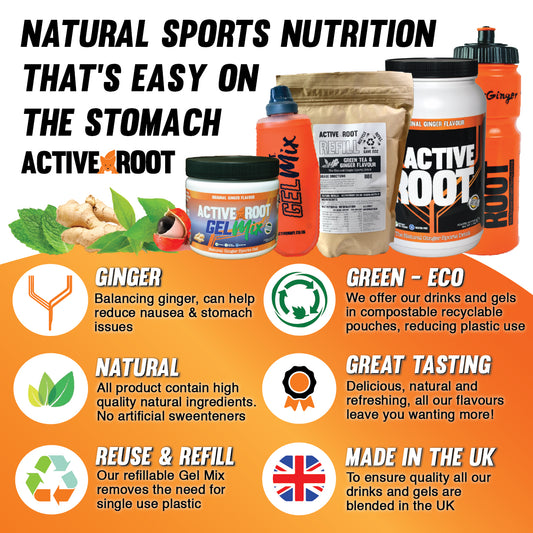 Sale
SaleSample Pack
Regular price £24.00 GBPRegular priceUnit price / per£24.39 GBPSale price £24.00 GBPSale -
Taster Pack
Regular price £9.25 GBPRegular priceUnit price / per -
Energy Bundle
Regular price £33.50 GBPRegular priceUnit price / per
During
Your nutrition needs for trail running will be time and distance dependent.
If you’re only going for a short run then you might not require any extra nutrition during.
Generally, if you’re running or racing for an hour or more (which you usually will be) then you’ll benefit from in-race fuelling.
While you’re out on the trail you’ll want to keep your energy and hydration levels up to maintain a consistent performance. There are a few different ways to do this and everyone will have their own preferences but the main forms of nutrition for in race fuelling tend to be: sports drinks, chews, and gel mix.
Some people might decide to skip the energy drink at the beginning instead choosing to drink it during their run. This is a great option for an energy and hydration boost and is great for trail running when you’re able to carry soft flasks in a running vest.
Using caffeinated gel mix can be a good idea during a trail run to help you maintain focus; really important when running on uneven and possibly unfamiliar terrain.
Carefully blended with real ginger, our Gel Mix formula helps calm nausea and gastrointestinal distress, so you can push through intense efforts without uncomfortable side stitches or indigestion. This innovative performance fuel powder packs 24g of easy-to-digest carbs per serving to deliver steady, smoothly sustained energy when you need it most.
We recommend using two 170ml soft flasks with gel mix which will be 3 servings per flask. This not only means that you don't have to carry and throw away multiple gels, but you can also decide how thick or runny you want your gel to be. Furthermore, you can also sip your gel more gradually rather than having to take it in one meaning less chance of those blood sugar spikes.
You should aim to consume a small amount at regular, frequent intervals, e.g. every 20 minutes. This is to maintain a steady energy supply and prevent blood sugar peaks and crashes.
Energy Gel Alternatives
If you are not keen on taking on gel mix then there are alternative fuelling methods.
You could take on fuel using our popular energy chews - they offer a rapid energy boost and replenish essential fluids with electrolytes. Every chew delivers around 6g of carbohydrates, 50mg of sea salt, and 140mg of stomach-soothing ginger.
For a quick energy boost, eat 6 pieces per hour during activity. Always follow consumption with a drink of water or sports drink.
Post-Run
Once again, your recovery nutrition strategy is something that’s best not left too late and is just as important as your pre-race so don’t skip it!
The key things to focus on post-race are: replenishing your electrolytes (rehydrate), restoring glycogen levels, rebuilding your immune defences, and repairing muscle tears.
We’d recommend having a bottle of Sports Drink or Electrolite Mix pre-made in preparation for completing your race. The refreshing ginger taste hits the spot after your efforts and offers the perfect hydration option post-race.
If you’ve been running somewhere cold, our Recovery Drinks are the perfect pick-me-up! Why not have a flask ready at the finish to rehydrate and enjoy the warming taste of ginger.
As well as a recovery drink you’ll also want to eat some actual food after your run. This can really be anything that is high in carbs and protein for their restorative properties, and includes fruits or vegetables high in vitamins and minerals for an immune boost.
Once you’ve got your trail running nutrition plan down then all that’s left to do is enjoy yourself. Trail running is a great way to spend time out in nature whilst also getting a great workout and with a current estimate of 20 million trail runners worldwide, the sport is growing in popularity every year.









Active Root
Sample Pack
Share
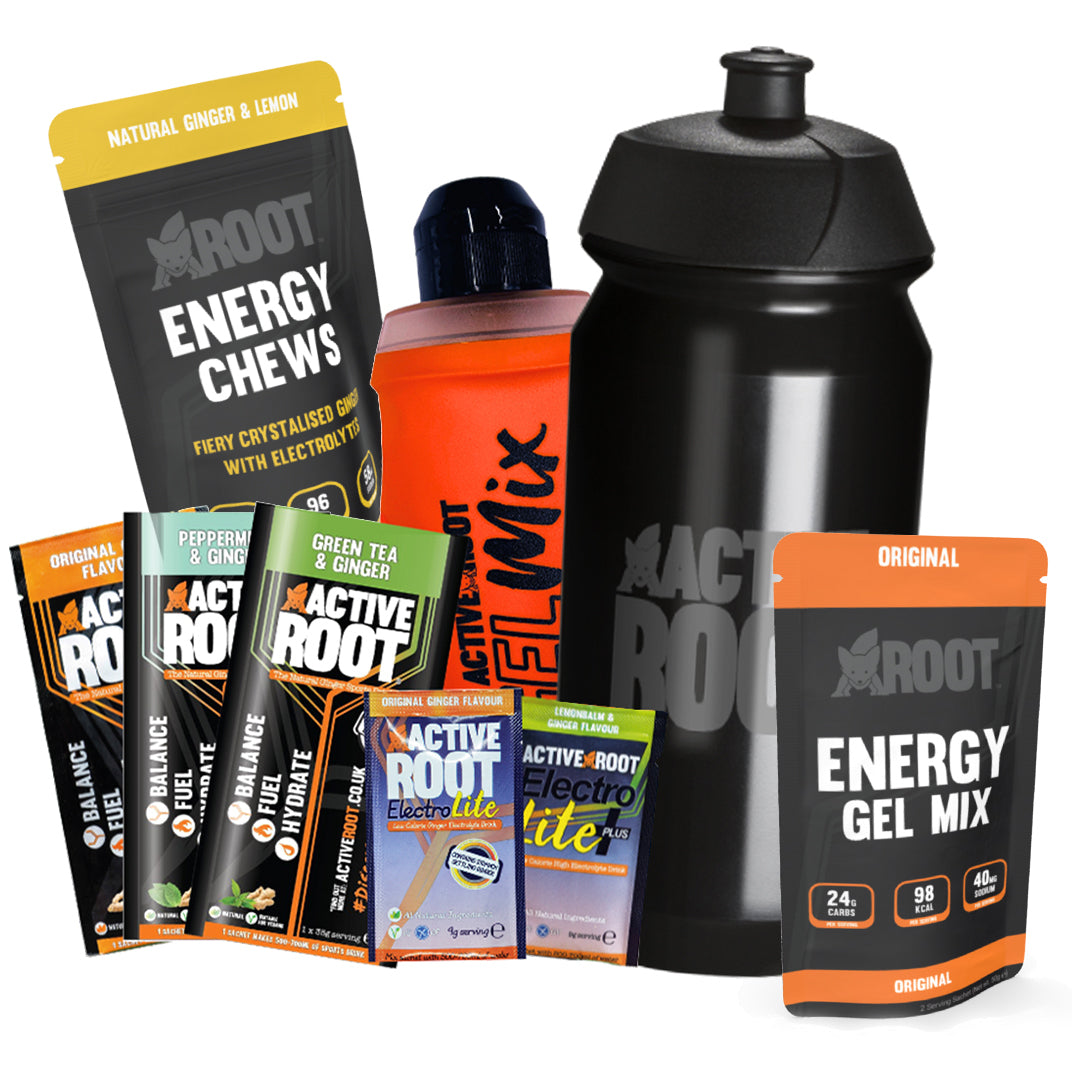
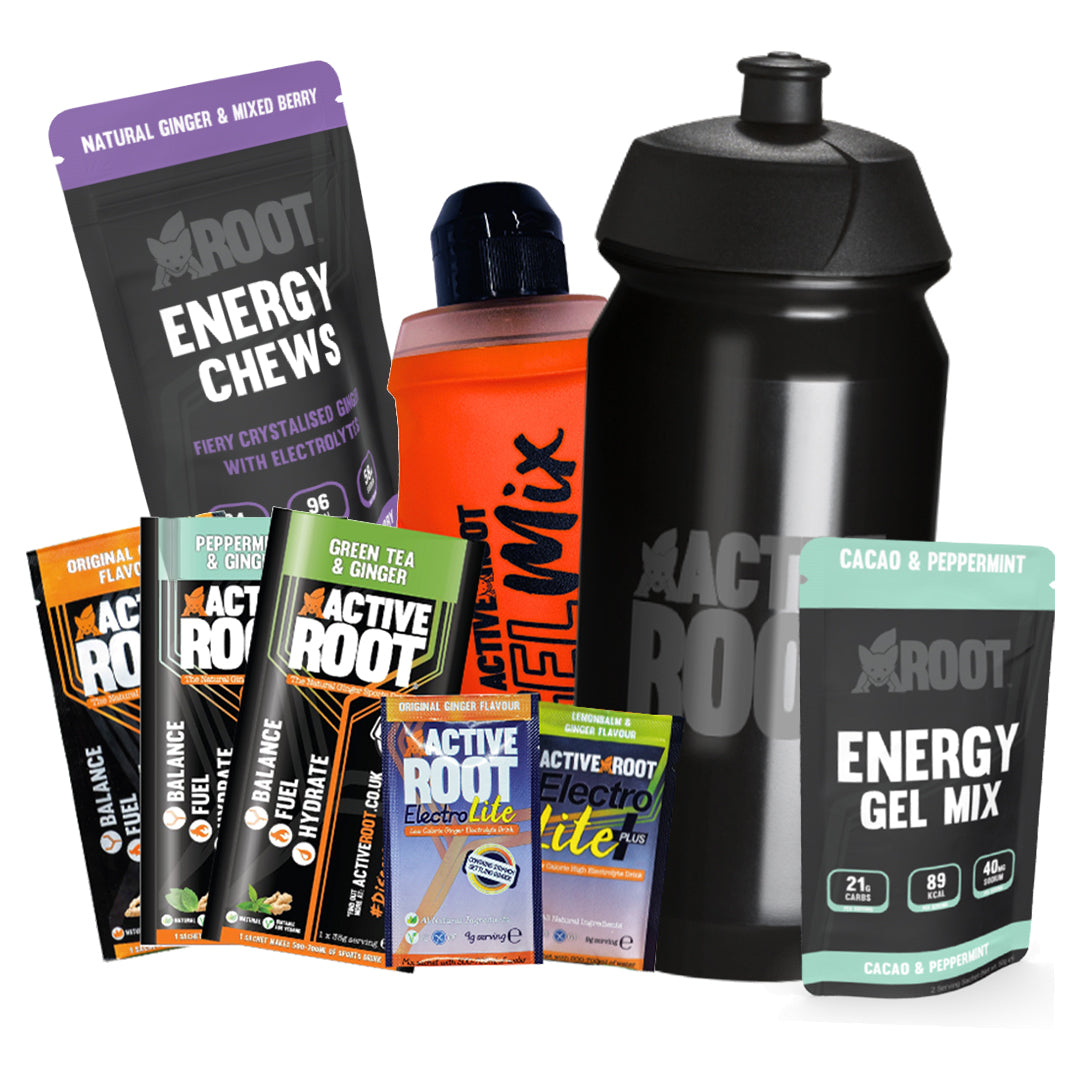
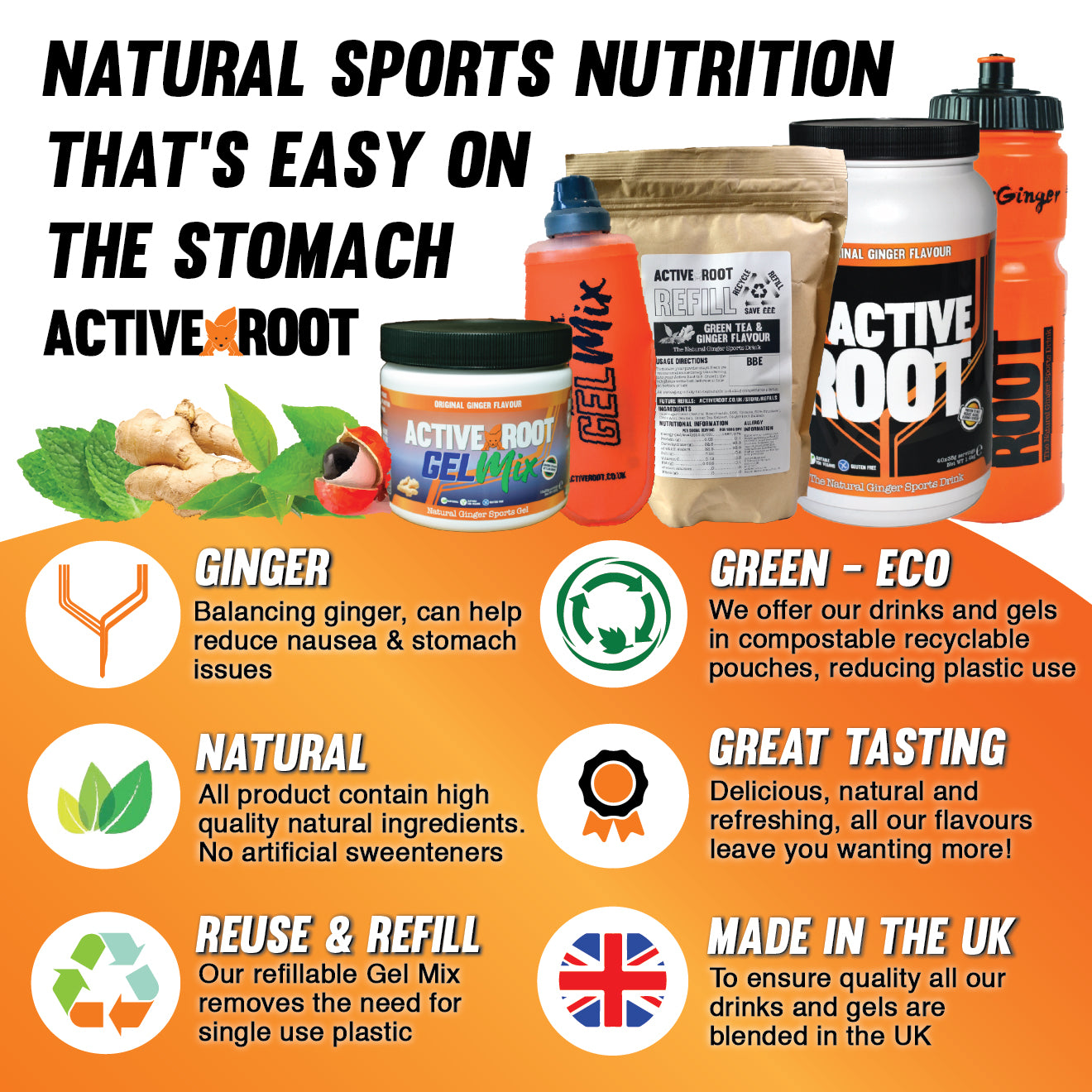
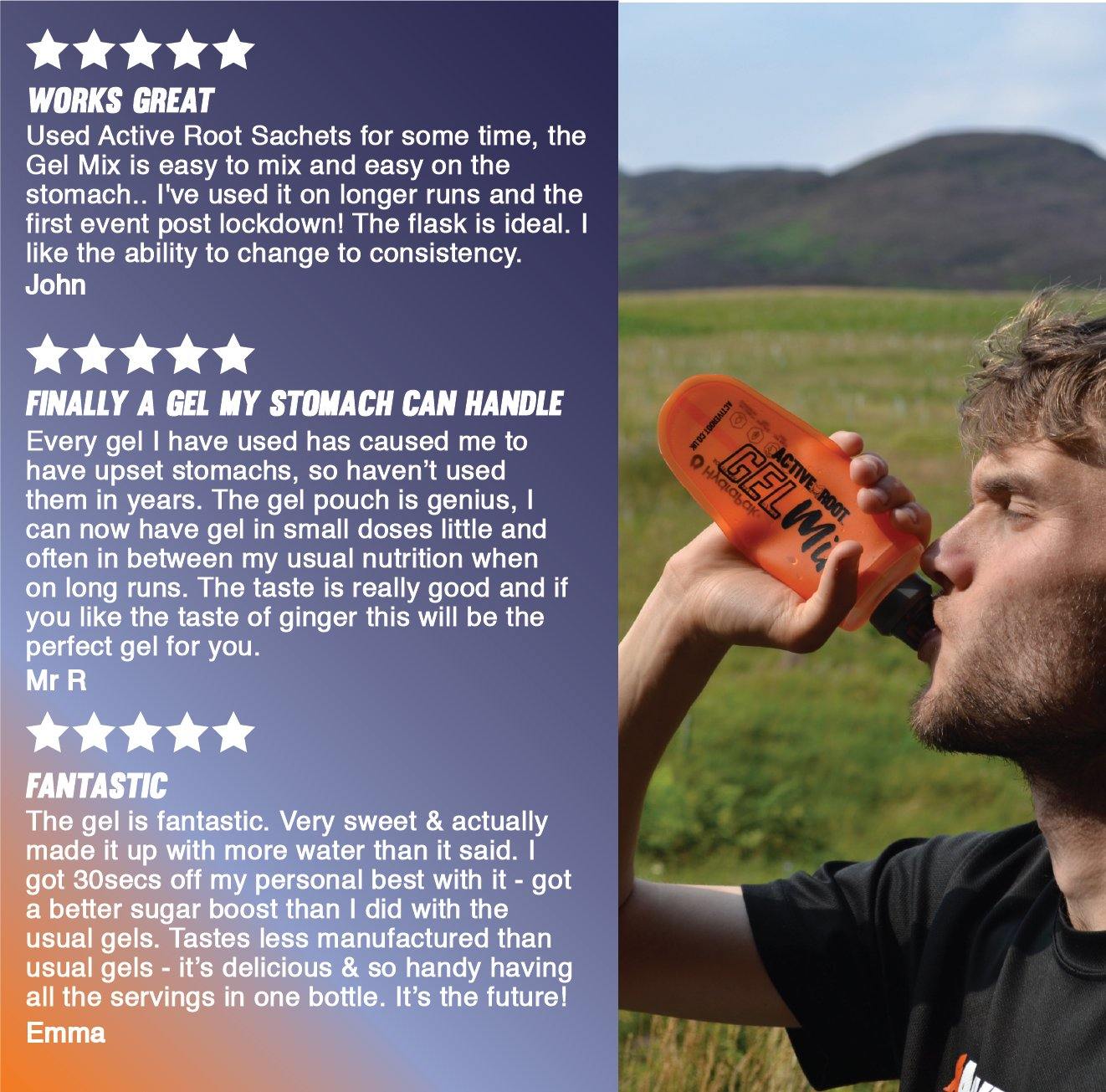



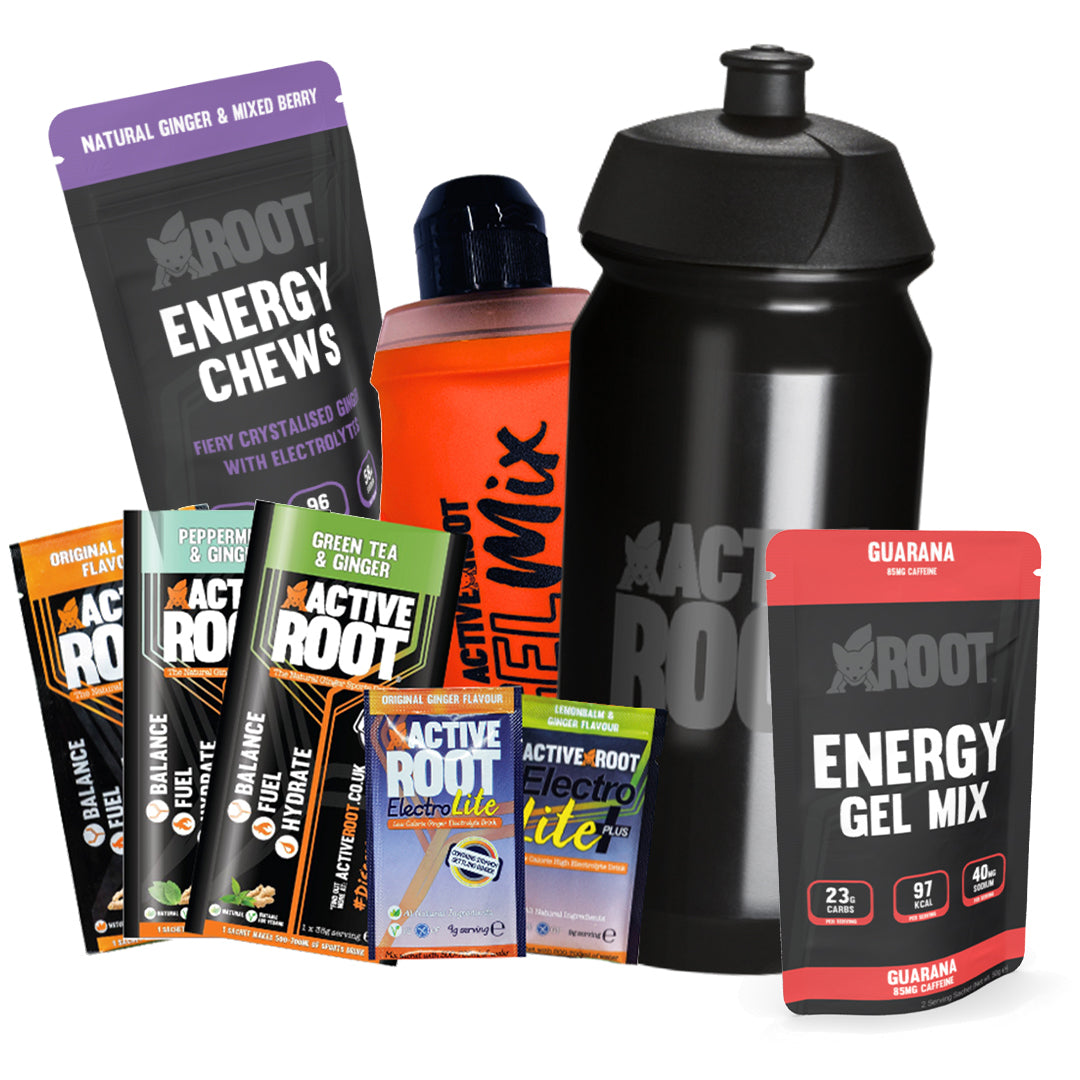
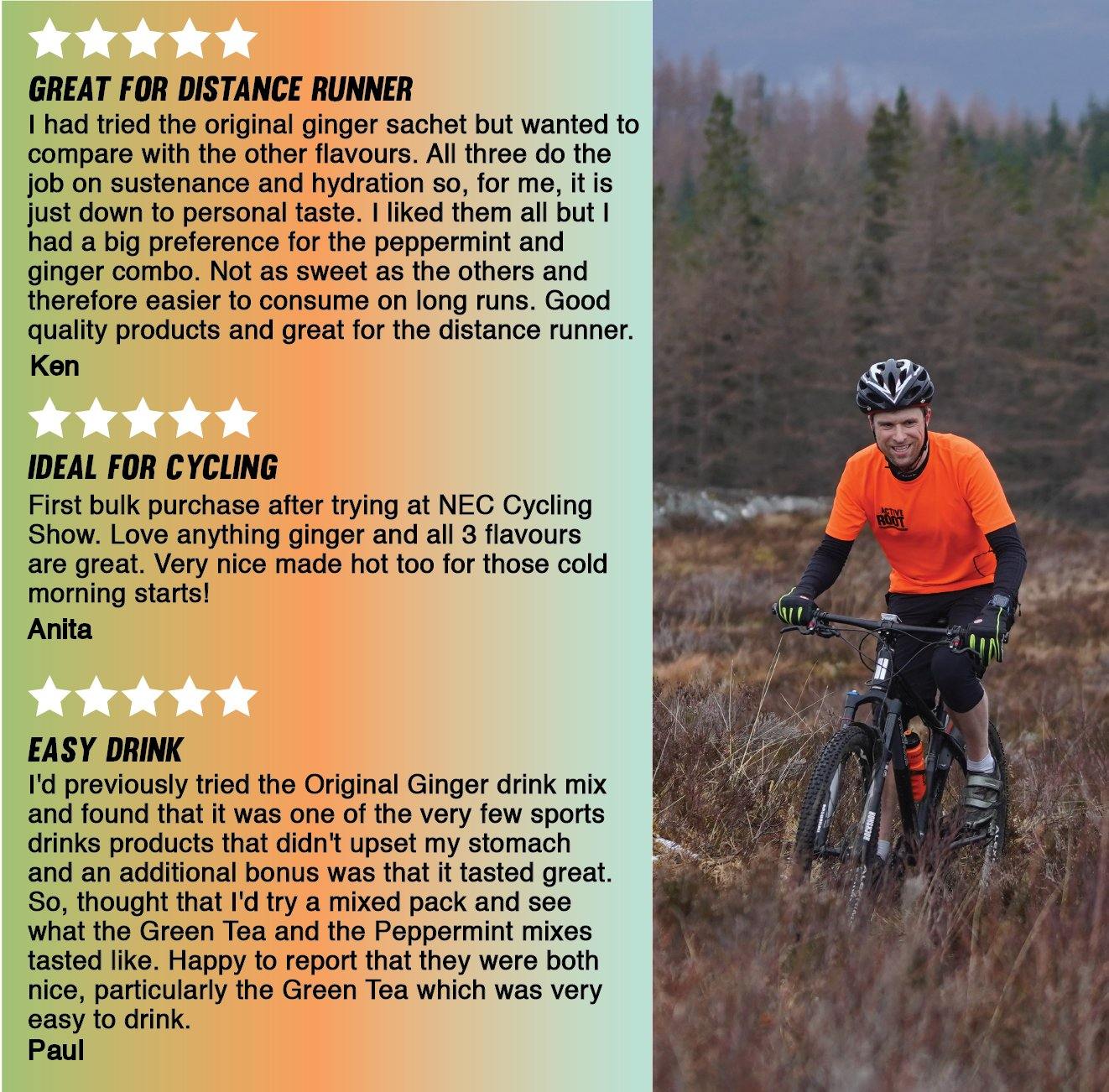
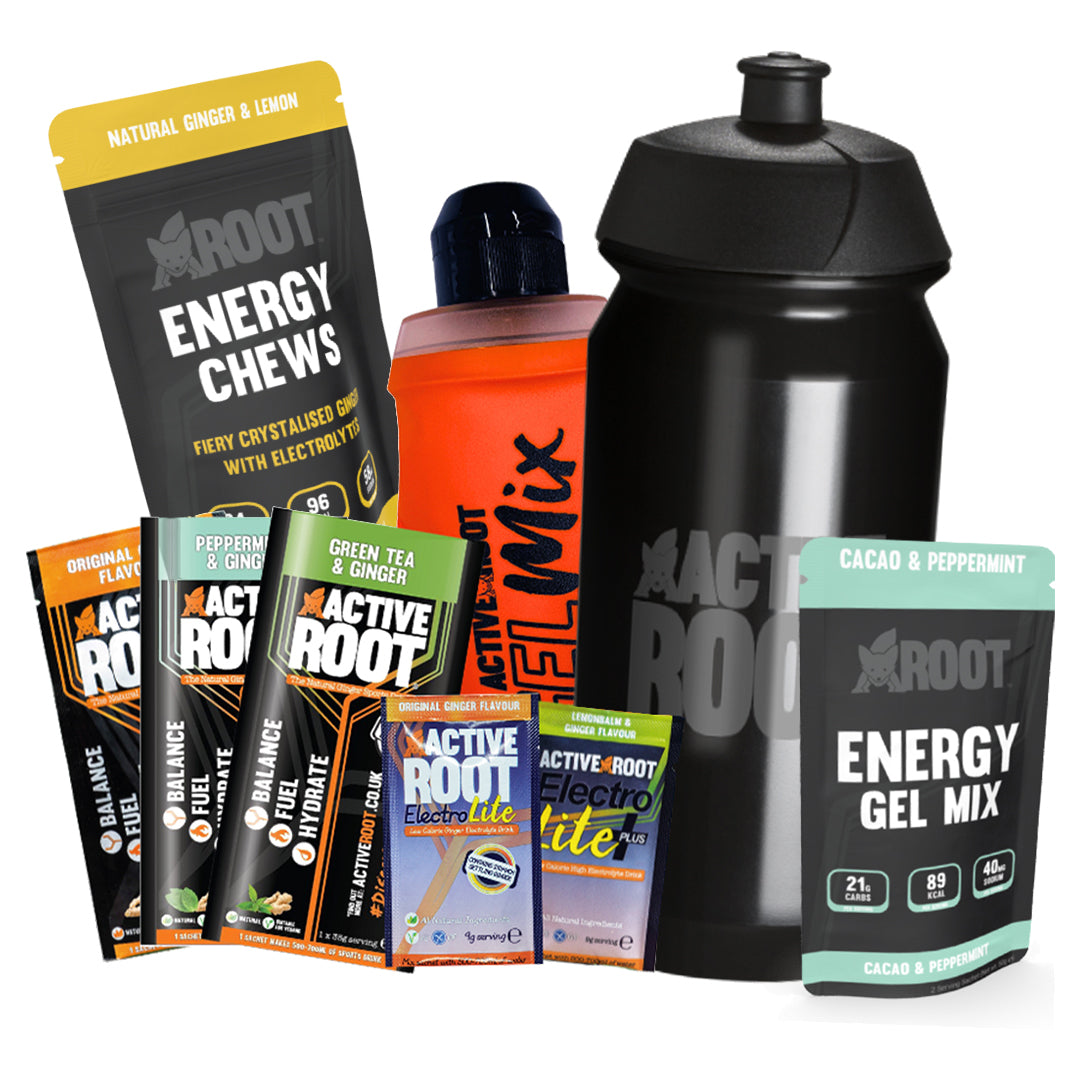
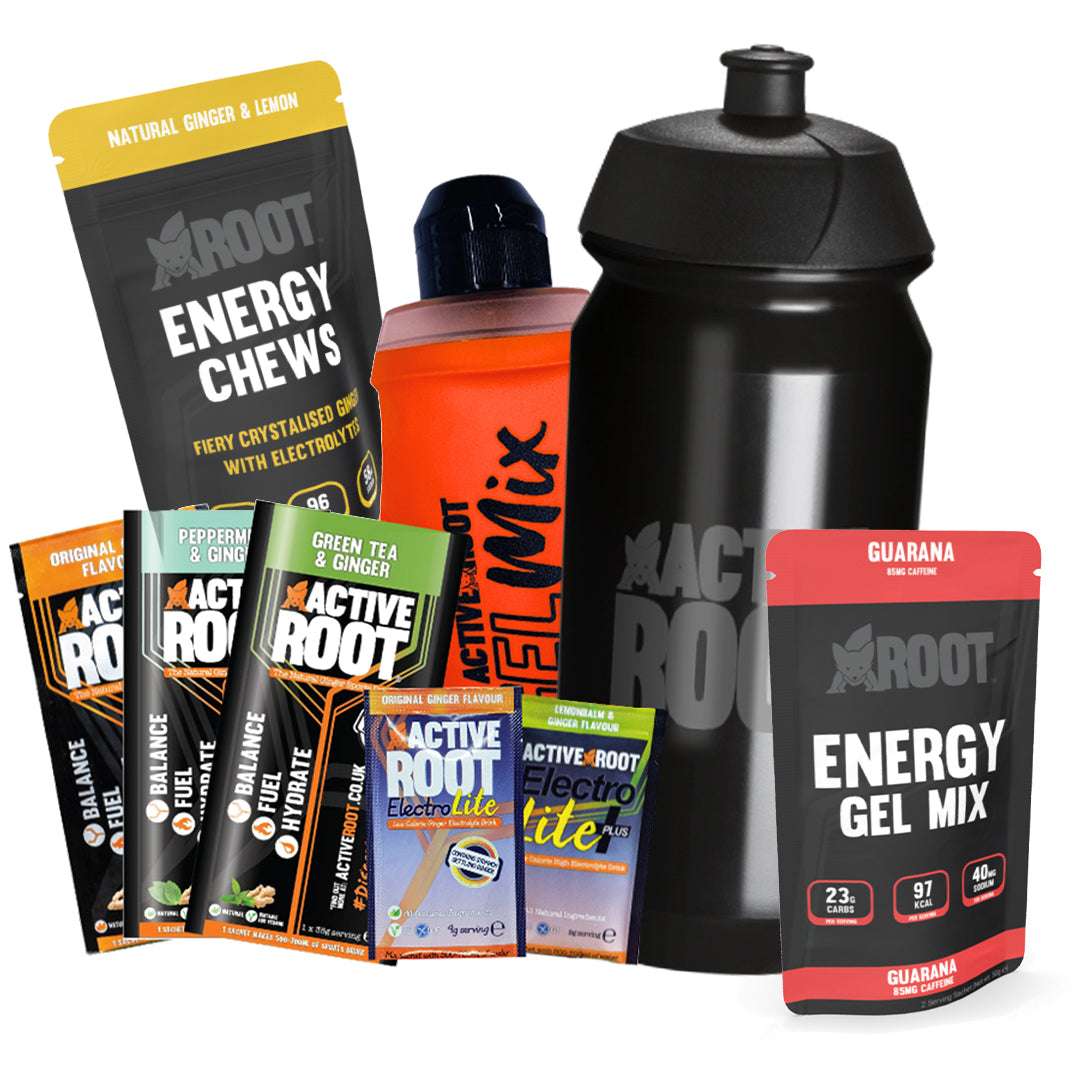

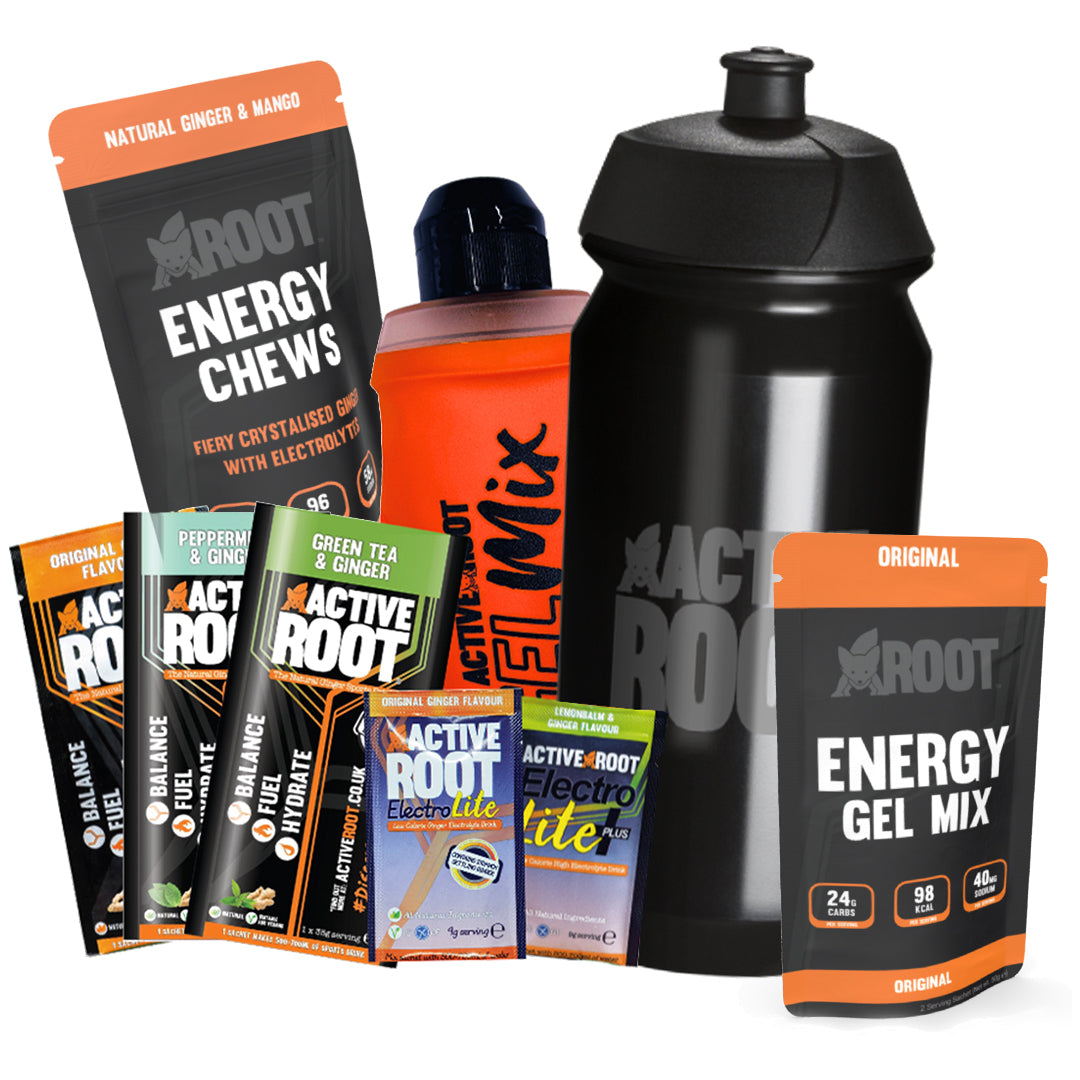
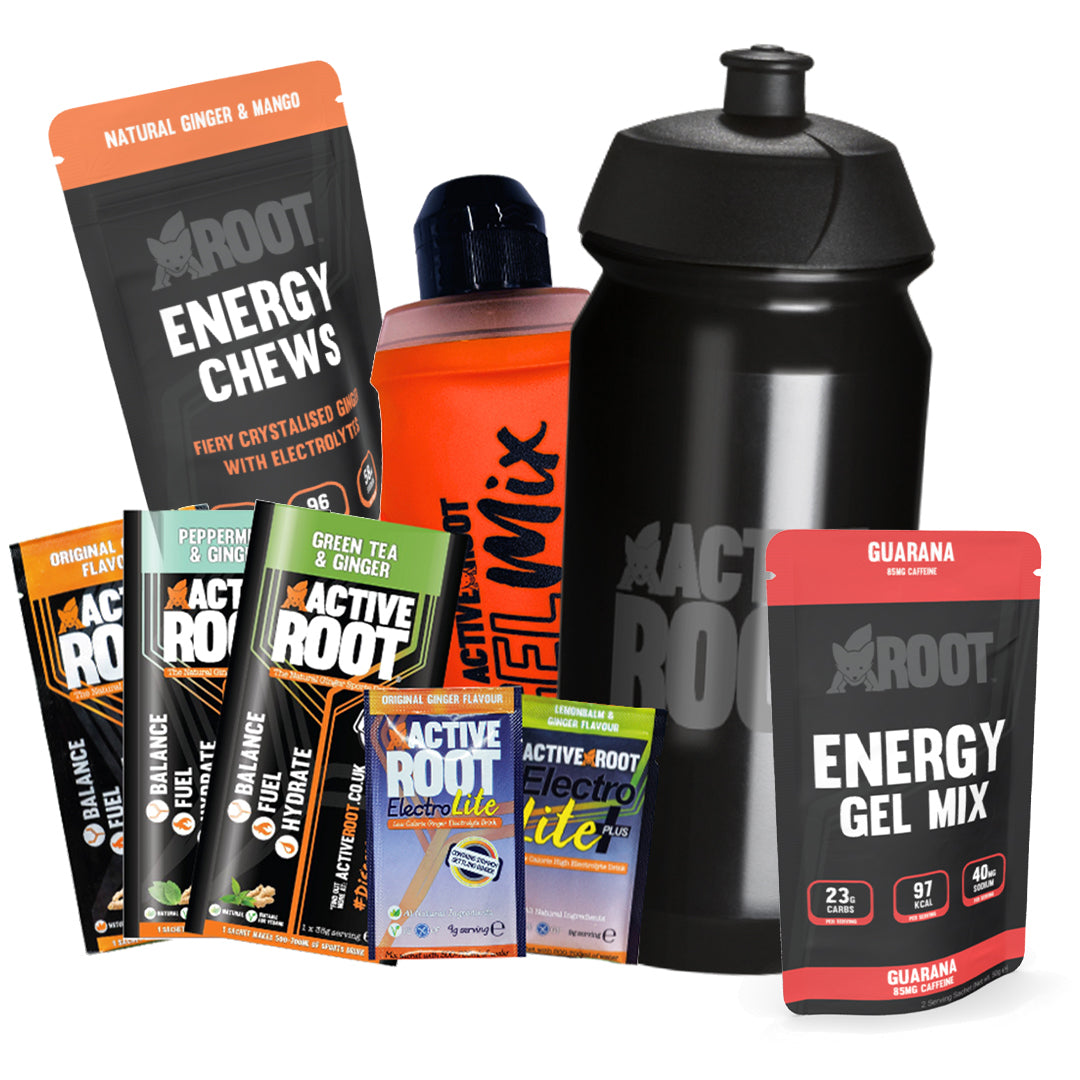
-
From Root to Route: Ginger's Role in Trail Running Nutrition
READ NOWTrail running is considered a mixture of running and hiking on any unpaved, natural surface, and can be done just about anywhere making it increasingly popular amongst new runners.
-
Trail Running Tips for Beginners
READ NOWTrail Running is considered a mixture of running and hiking on any unpaved, natural, surface, and can be done just about anywhere making it increasingly popular amongst new runners.
-
Trail Running Nutrition FAQs: Your Guide to Ginger's Benefits with Active Root
READ NOWTake a look at why Active Root should be your chosen fuel on race day, and during your sessions to keep you fuelled, balanced and hydrated!
Trail Running: FAQs
How should I fuel before a trail run?
It’s best to eat 2 to 3 hours ahead of a run, this will give your body plenty of time to digest your meal. Ideally, any meal eaten pre-run should be high in carbohydrates and protein and avoid too many fats or fibre which can leave you feeling full and uncomfortable.
What should I eat during a long trail run to maintain energy levels?
During extended trail runs lasting over 60 minutes, keep your energy and hydration levels up to maintain a consistent performance. There are a few different ways to do this and everyone will have their own preferences but the main forms of nutrition for in race fuelling tend to be: sports drinks, chews, and gel mix.
How can I prevent dehydration during trail running?
Stay well-hydrated before and during your trail runs by drinking fluids regularly. Aim for 100 to 200ml of water every 20 to 30 minutes, especially on hot or humid days. For runs exceeding 60 minutes, consider hydrating with electrolyte drinks to replace lost minerals. We’d recommend our Sports Drink and ElectroLite drinks for this purpose.




